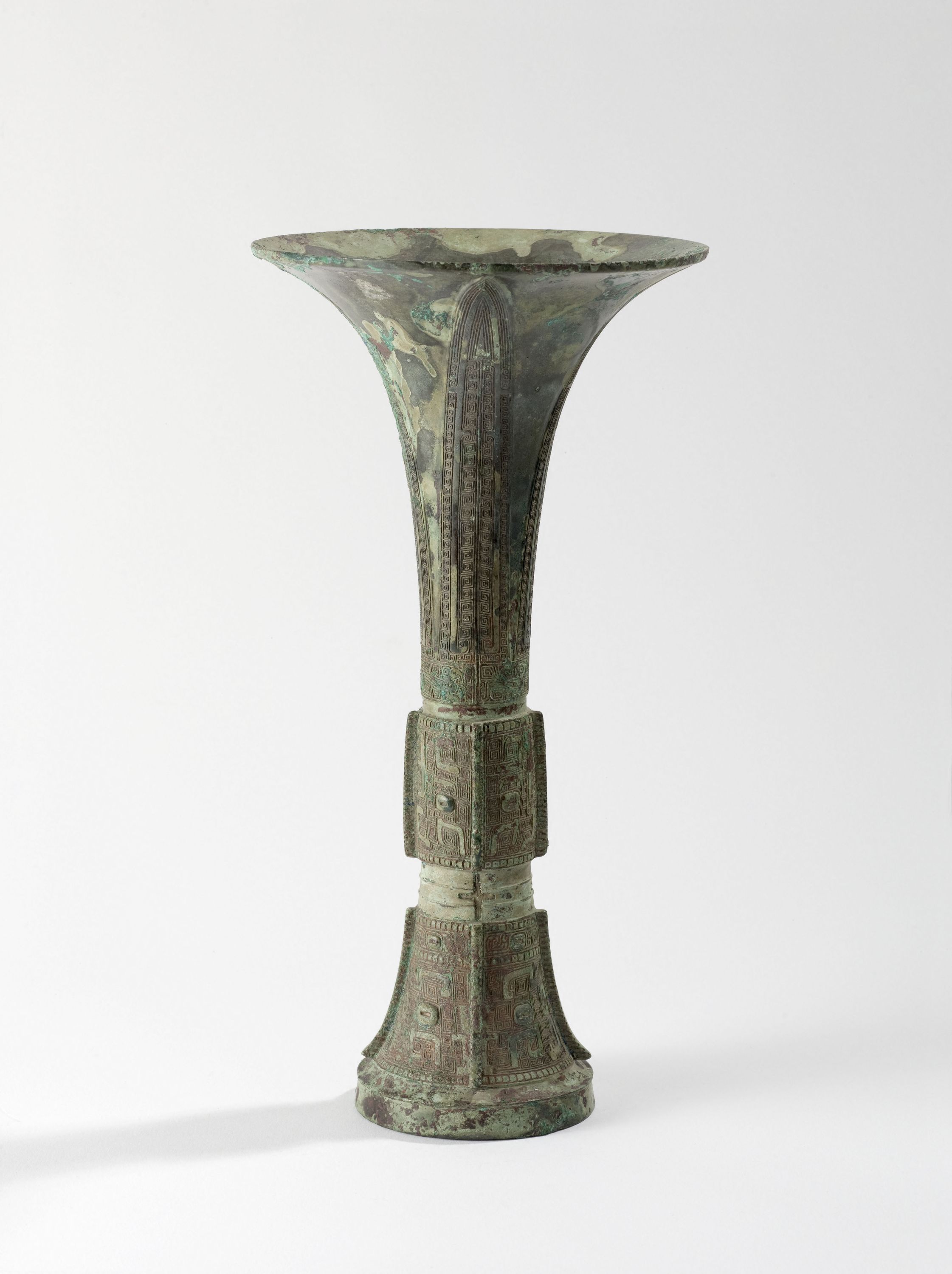
Vase gu 觚
Bronze, Fonte, Fonte au moule
Vaisselle et ustensile de cuisine, Vase, Coupe (récipient), Objet religieux
Achat avec participation : Gutmann, Edgar
M.C. 7808
Inscription: Tian from the Ya clan
No ancient reference designates this type of cup as a gu. The name derives from literature of the Song period (960-1279). In the Shang dynasty (circa 1550-circa 1050 BC), gu were placed in tombs along with jue pouring vessels and jia vessels, no doubt for libations of fermented beverages. They were squat in shape in the Erligang period (circa 1550-circa 1300 BC), but became became more slender during the Anyang period (circa 1300- circa 1050 BC). The Museum Cernuschi gu dates from the latter phase of its development, with a decoration similar to that of many cups from the late Shang dynasty.
On the foot and central ring, exploded taotie masks with elements in relief stand out over a ground of square spirals. The four long triangular elements on the neck are interpreted by most authors as representing cicada wings. Small vertical notched ridges adorn the central ring and foot. The band at the base of the neck features an exceptionally original decoration of four small birds facing each other two by two; this band usually features silk worms or, more rarely, dragons.
In the Western Zhou period (circa 1050-770 BC), the use of gu was abandoned, even before the profound religious transformation of the mid 9th century BC.